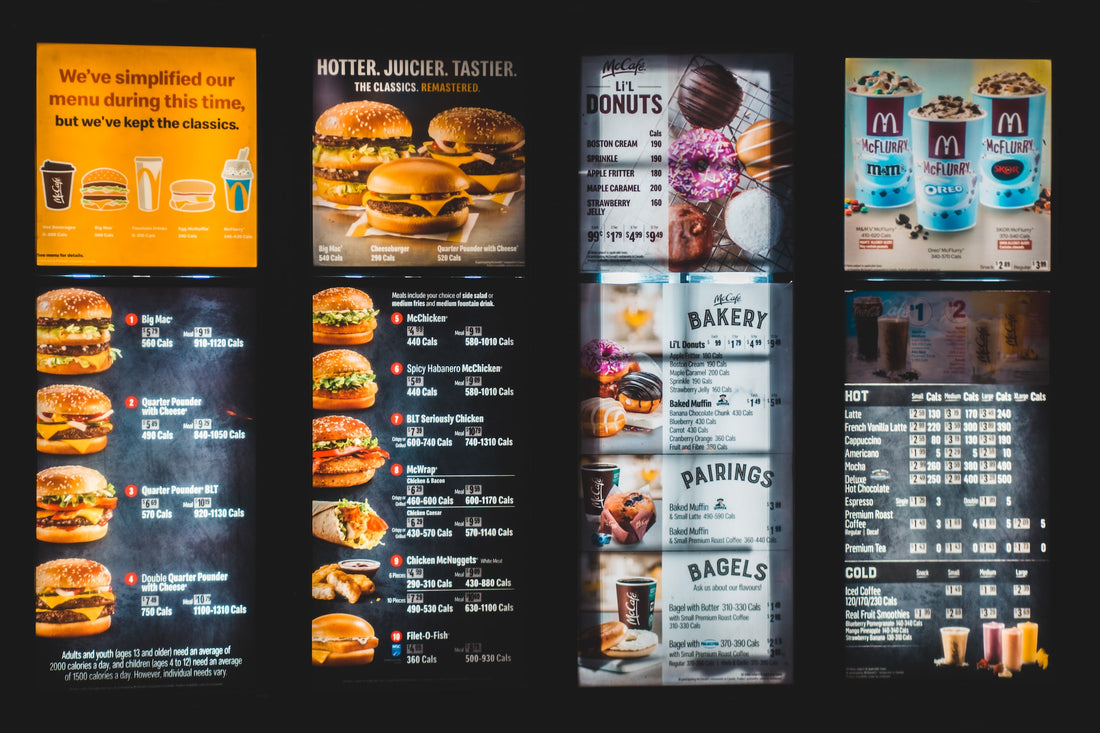In the age of smartphones and ever-evolving technology, digital menus have become a necessity for restaurants and food establishments to thrive. A well-designed digital menu not only improves the overall customer experience but also has the potential to increase sales. In this blog, we'll explore the essential steps to create a digital menu that sells.
Step 1: Define Your Brand Identity
Before diving into the design process, it's crucial to establish your brand identity. This includes your brand's colours, logo, typography, and overall style. Your digital menu should reflect your brand's personality and resonate with your target audience. A cohesive and consistent brand identity across all platforms helps build trust and recognition among customers.
Step 2: Choose the Right Digital Menu Platform
Selecting the right platform for your digital menu is essential for a seamless and efficient experience. There are numerous digital menu platforms available, with varying features and pricing options. When selecting a platform, consider factors such as ease of use, customisation options, compatibility with your POS system, and the ability to update menu items and pricing in real-time.
Some popular digital menu platforms include:
TouchBistro
Square for Restaurants
Toast
Lightspeed
Upserve
Step 3: Organise Your Menu Items
A well-organised menu is key to guiding customers towards the items you want to sell the most. Divide your menu into clear sections, such as starters, main courses, desserts, and drinks. Within each section, arrange items in a logical order, starting with the most popular or profitable dishes.
Consider employing the Golden Triangle technique, which suggests that customers' eyes naturally gravitate to the top-right corner of a menu, then move to the top-left corner, and finally, to the centre. Place your best-selling items or high-margin dishes in these strategic locations to maximise visibility and sales potential.
Step 4: Use High-Quality Images and Descriptions
Visual appeal is crucial for a digital menu. High-quality images can entice customers and encourage them to try new dishes. Be sure to use professional, mouthwatering images that accurately represent your food items. Additionally, consider including short, engaging descriptions for each dish. Descriptions should highlight key ingredients and unique features, giving customers a clear understanding of what to expect.
Step 5: Optimise Your Menu for Different Devices
Digital menus can be accessed on a variety of devices, from smartphones and tablets to digital kiosks and TV screens. It's important to ensure that your menu is optimised for different screen sizes and resolutions. Your digital menu platform should offer responsive design features that automatically adapt the layout and content based on the device being used.
Step 6: Incorporate Upselling and Cross-Selling Techniques
A well-designed digital menu can be a powerful tool for upselling and cross-selling. Use your menu to suggest add-ons, side dishes, or complementary items that pair well with customers' selected dishes. For example, you can recommend a specific wine or cocktail to accompany a particular entrée, or offer a discounted dessert when customers order a main course. These tactics can increase your average transaction value and boost overall sales.
Step 7: Make Your Menu Accessible
Accessibility should be a priority when designing your digital menu. Ensure that your menu is compatible with screen readers and follows the Web Content Accessibility Guidelines (WCAG) to cater to individuals with disabilities. Consider offering options for adjusting text size and colour contrast to improve readability for customers with visual impairments.
Step 8: Keep Your Menu Updated
One of the key advantages of a digital menu is the ability to make instant updates. Regularly review your menu to remove out-of-stock items, update seasonal offerings, and make pricing adjustments. Keeping your menu current helps manage customer expectations and can prevent negative experiences resulting from unavailable items or outdated information.
Step 9: Promote Your Digital Menu
Once your digital menu is ready, it's time to promote it to your customers. Share your digital menu on your website, social media channels, and through email marketing campaigns. Consider using QR codes on physical menus, promotional materials, and in-store signage to make it easy for customers to access your digital menu on their smartphones.
Step 10: Monitor Performance and Make Adjustments
Finally, it's essential to monitor the performance of your digital menu and make adjustments as needed. Many digital menu platforms provide analytics that can help you track customer engagement, most popular dishes, and overall sales. Use these insights to refine your menu layout, pricing strategy, and promotional offers to maximise your revenue potential.
Conclusion
Creating a digital menu that sells requires careful planning, attention to detail, and a deep understanding of your target audience. By defining your brand identity, choosing the right platform, organising your menu items strategically, and incorporating upselling techniques, you can transform your digital menu into a powerful sales tool. Furthermore, ensuring accessibility, keeping your menu updated, and continuously monitoring performance will help you stay ahead of the competition and adapt to changing customer preferences.
Follow these ten steps to craft a digital menu that not only looks great but also drives sales for your restaurant or food establishment. With a little time and effort, you can create a digital menu that entices customers and showcases your culinary offerings in the best possible light.
For further support and expert advice on how to craft a digital menu board that sells, get in contact with us at James Hogg Display.

